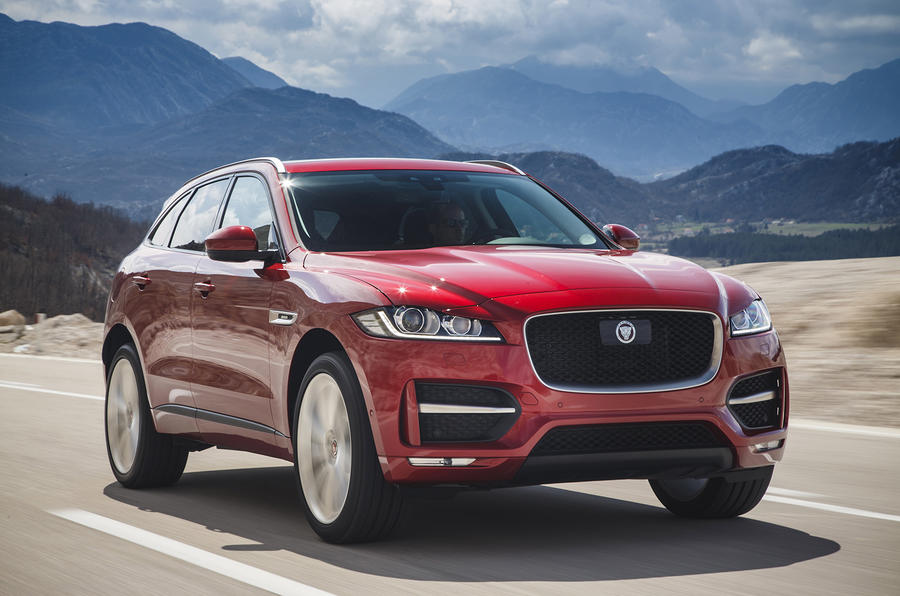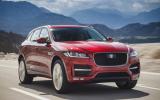What is it?
The entry-level variant to Jaguar’s new Jaguar F-Pace crossover. Although entry-level is a pretty loose term here: yes this is the 2.0-litre diesel model that provides the way into the F-Pace range, but our test car has a few options that’ll lift it above the first model in. Here it’s mated to an all-wheel-drive system (rear-drive is cheaper), it has an eight-speed auto transmission (a six-speed manual is standard) and it runs on adaptive dampers (conventional passive dampers are the base option). But for now, at least, this is the most meagre F-Pace that’s available to us: and it’s representative of the model that will prove the most popular in the range.
In its mechanical make up it’s the same as the 3.0-litre V6 of our feature drive. Which means it’s based on an 80% aluminium architecture shared with the Jaguar XE and Jaguar XF executive saloons, although the F-Pace runs to its own wheelbase and tracks. Suspension is by double wishbones at the front, and an integral link (more complex, effective and expensive than a multi-link) at the rear. It’s a sound setup for giving good dynamics.
At 4.7m long the F-Pace is fairly lengthy in its class, where it competes against the likes of the BMW X3, Audi Q5 and, crucially from a dynamic perspective, the heroically able Porsche Macan. The whole F-Pace range starts at around £37,000 and runs to over £50,000.
What's it like?
Because it’s quite big on the outside, the F-Pace is an accommodating car inside, too. Jaguar is particularly pleased with the 650-litre luggage capacity, while the rear seats are plenty big enough for tall adults to sit behind tall adults in the front. In terms of cabin feel, the F-Pace is comfortably finished at this price level – as you get towards the top-end of F-Pace pricing, some of the materials start to bear less favourable comparison with rivals – but against its price rivals, the cheaper 2.0-litre fares rather better.
The 178bhp diesel is Jaguar Land Rover’s new Ingenium unit, which in its earliest incarnation was quite grumbly. But clearly work has been done because in the F-Pace it fires to a quiet idle. The eight-speed automatic is one of the best in production, so shifts cleanly and smoothly, but this is a big car for a 2.0-litre engine: it’d be heavier if it weren’t aluminium, but the kerbweight is still 1775kg. The 2.0 rarely struggles, but if you put the adaptive drive selector into Eco mode it’s reluctant to downshift, so you have to pull changes yourself if you don’t want to feel like you’re driving through treacle.
But if there’s an upside to having a smaller engine under the hood – and there is – then it’s the fact that it’s a more agile car than either the V6 petrol or diesel variants. That makes the F-Pace, which is already one of the most dynamically capable cars in the class, steer with extra verve in its 2.0-litre format, holding a line more keenly. It has less punch down a straight, of course – the 3.0-litre diesel is the effortless F-Pace boss in that respect – but in daily driving, the motorway haul, the trips through town that constitute the way we go about our business most of the time, it’s fine. And when you do choose to extend the engine to make progress, it retains its smoothness.
Smoothness is a word you’d associate with the ride, too. Jaguar tends to make cars ride well and the F-Pace is no exception, even though it rides on relatively big wheels – our test car was on 20in rims but you can specify up to 22s, which Jaguar says has the same depth of sidewall than most rivals’ 20s. And they’re not runflats, so it’s smooth. If the German rivals do have an area where they excel, it’s usually in high-speed straight-line stability. Our route didn’t have many tests of that, but the F-Pace never felt nervous to us.








































Join the debate
Add your comment
F Pace electronics
Its clearly an electronic programme issue but they (jaguar) still have not solved it until they do I would stay well clear
Satnav
being a 'fixed' unit within the car, destinations have to be dialled in directly via the satnav using the touchscreen. This is fine for a destination where you want the satnav itself decide the route to take. But what if you want to programme a ROUTE, not just the destination. On a portable satnav you can plug it into your PC, design a complete route on google map and then enter it into the unit.
With BMW's iDrive you can design your route and either remotely send it to the car or enter it directly into the car's satnav with a USB. I believe Audi now have a similar capability but via SD cards.
Sadly, it seems there is no equivalent with JLR. The best you get here are options regarding the fastest or shortest. For someone who wants to tour the continent but on a pre-designated route, with a mixture of auto-routes, 'B' roads and stopovers, this is just not good enough.
Not into JLR but this seems
lso I don't understand why JLR didn't come to an internal agreement yonks ago-Jag making a 7-seater and LR 5-seaters only. Ford should have ensured Jag had a 7-seater X5 rival back in the early 2000s.